
Inauguration of the cathedral constructed in Saigon by the French government (after a sketch by Naval Lieutenant Dumont)
This article was published previously in Saigoneer http://saigoneer.com
The Sun Wah Tower at 115 Nguyễn Huệ stands on the site of Saigon’s first Roman Catholic cathedral.
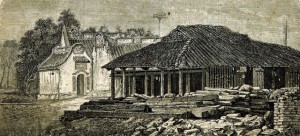
In 1860 Bishop Lefèbvre set up his first “cathedral” in an abandoned pagoda in the ville basse (lower city)
The earliest French colonial settlers were obliged to celebrate mass in a makeshift church. According to Alfred Schreiner’s Abrégé de l’histoire d’Annam (Short History of Annam, 1906), in 1860 Monsignor Dominique Lefèbvre, Bishop of Isauropolis and Apostolic Vicar of Lower Cochinchina, set up his first “cathedral” in an abandoned pagoda in the ville basse (lower city).
This arrangement continued until 1863, when Admiral-Governor Louis Adolphe Bonard (30 November 1861-1 May 1863) commissioned the construction of the city’s first purpose-built cathedral, the Église Sainte-Marie-Immaculée (Church of Saint Mary of the Immaculate Conception).
The location chosen for the new cathedral was the mid point of rue Charner, right next to the Grand Canal [Nguyễn Huệ boulevard]. According to the journal Moniteur de l’Armée (Army Monitor), it was built to the plans and under the direction of Lieutenant Colonel Paul Coffyn of the Marine Engineering Corps Roads and Bridges Department. Lieutenant Colonel Coffyn was assisted by Captain Blazy. The first stone was laid on 28 March 1863 by Bishop Lefèbvre.
The cathedral took just four months to build and was inaugurated on 26 July 1863 in the presence of Bishop Lefèbvre and Bonard’s successor, Admiral Governor Pierre-Paul de La Grandière (1 May 1863-31 March 1865).
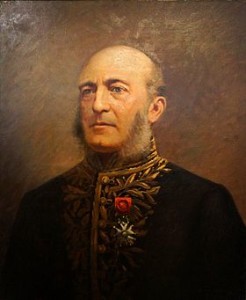
Admiral Governor Pierre-Paul de La Grandière (1 May 1863-31 March 1865)
The inauguration ceremony was described as follows in Le Monde illustré (Illustrated World) magazine of 19 September 1863:
“Admiral Governor de Lagrandière arranged to surround Bishop Lefèbvre with every imaginable pomp. The Admiral himself appeared at the head of his General Staff in the full uniform of the country, that is to say, with light clothing and pith helmet replacing the thick fabric uniform and leather headdress worn in Europe. Flags and banners marked the passage of the procession, cannon sounded and military music and religious songs were performed by the bands and choirs of our brave sailors.
There are currently few Europeans in Saigon; apart from our troops, they do not exceed 200 or 300; there are also about 8,000 Chinese and 10,000 Annamites, but we can say that not one was missing from this grand celebration.
It created a profound impression, particularly on the local people who were attending for the first time one of the solemn ceremonies of their western allies.
Back home in Paris, this cathedral (of which we have provided a very accurate drawing, see above) would only be regarded as a chapel. But it has a no less monumental aspect, which is even more remarkable as it was built with great intelligence to meet the needs of the hot climate. It is constructed from wood and brick. The windows, with which it is abundantly provided on two floors, are equipped with louvres to optimise air flow.
It was built by Chinese labourers, who as we know are very proficient in all types of manual and mechanical work, under the direction of French engineer officers.
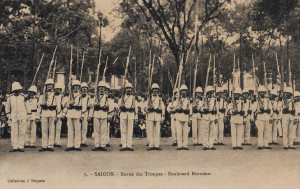
A review of colonial troops on boulevard Norodom
As for the interior, no attempt was made to provide unnecessary luxury; it is very simple. At the rear is a rose stained-glass window set in an iron frame, which creates a beautiful effect. The high altar is located in a vaulted niche painted in blue with gold stars.
The church can hold 400 people; thus, from what we have said of the French population in Saigon, it is very adequate.”
The magazine also comments:
“We had no intention of creating a lasting monument; that would have taken a lot of time and financial resources which are not yet available to us. But this church will last us 15 to 20 years and can then be replaced by a building which accords with plans for the ‘new Saigon’ [the Coffyn Plan “for a city of 500,000 souls,” drawn up in May 1862].”
It is perhaps just as well that the new cathedral was regarded only as a temporary one, because, according to Schreiner, “it was devoured in less than 10 years by termites…. in 1874 we were obliged to set up a temporary cathedral in the salle des fêtes (events hall) of the former governor’s palace.” This arrangement continued until the inauguration of the Notre-Dame Cathedral in 1880.
Following the demolition of the Église Sainte-Marie-Immaculée in the early 1870s, a new law court housing a Justice de paix (Justice of the Peace) was opened on the same site in May 1875.
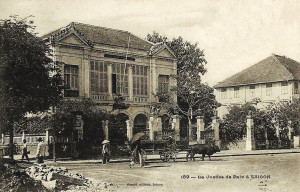
The Justice de paix (Justice of the Peace), opened in 1875
Before the completion of the Palais de Justice de Saïgon in 1885, this served as the main judicial organ of the city, with jurisdiction in both criminal and civil cases, and the boulevard in front of it became a place of execution. Later, the Justice de paix dealt mainly with local administrative applications. After 1954 it became the District 1 court, in which capacity it survived until 1994.
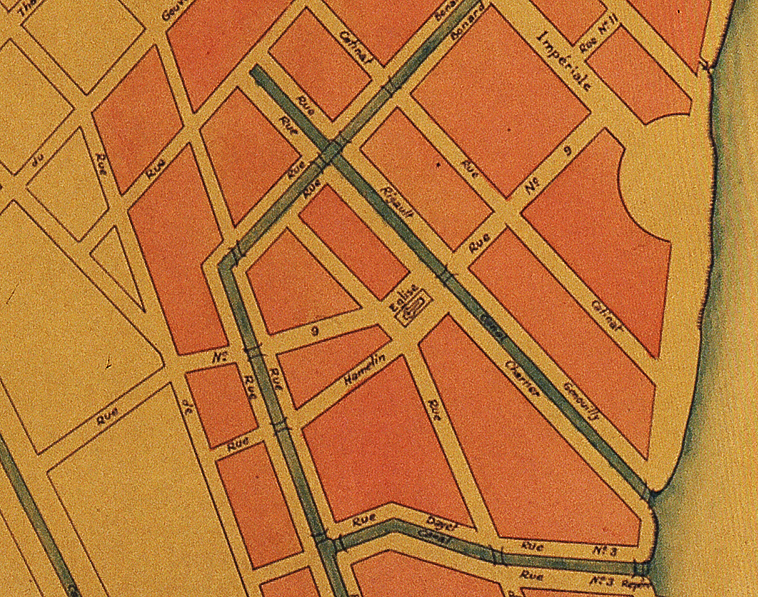
A map showing the location of the Église Sainte-Marie-Immaculée in 1863. By 1864 the upper half of the Grand Canal, including the area in front of the cathedral, had been filled
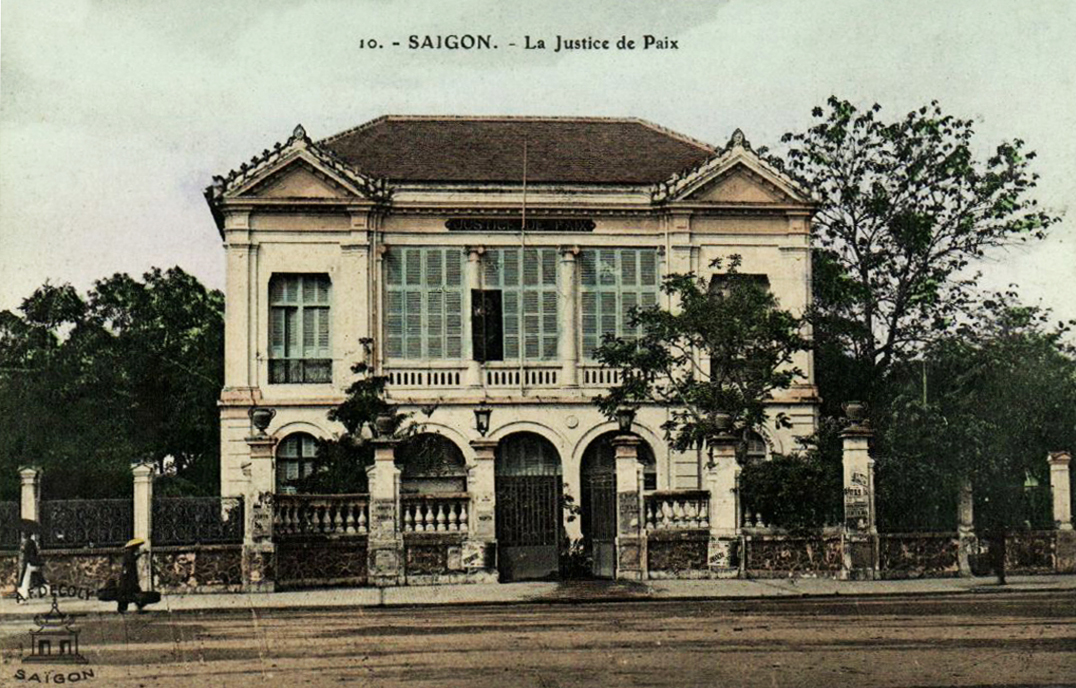
Another photograph of the Justice de paix (Justice of the Peace)
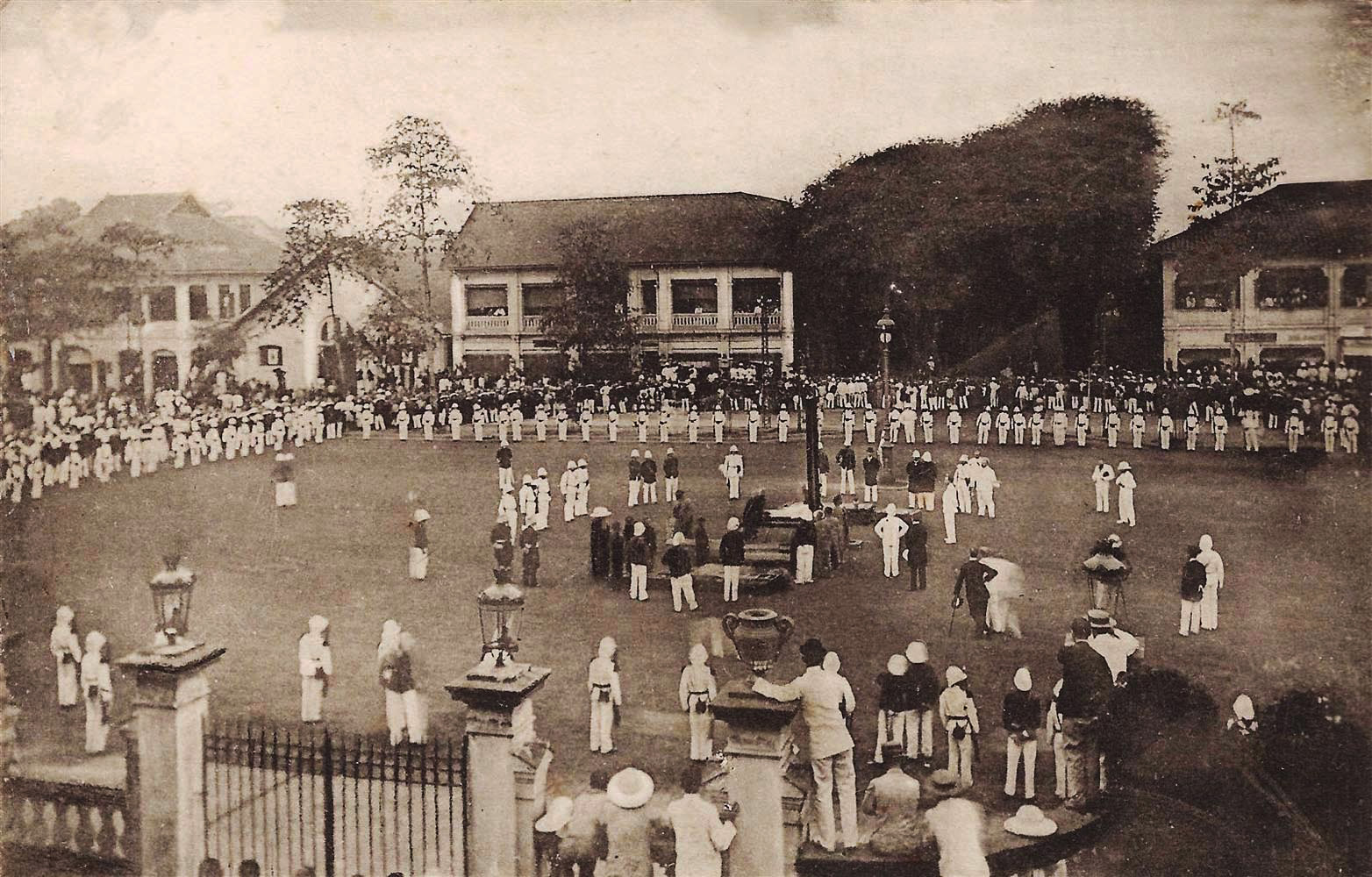
After 1875 the boulevard in front of the Justice de paix became a place of execution
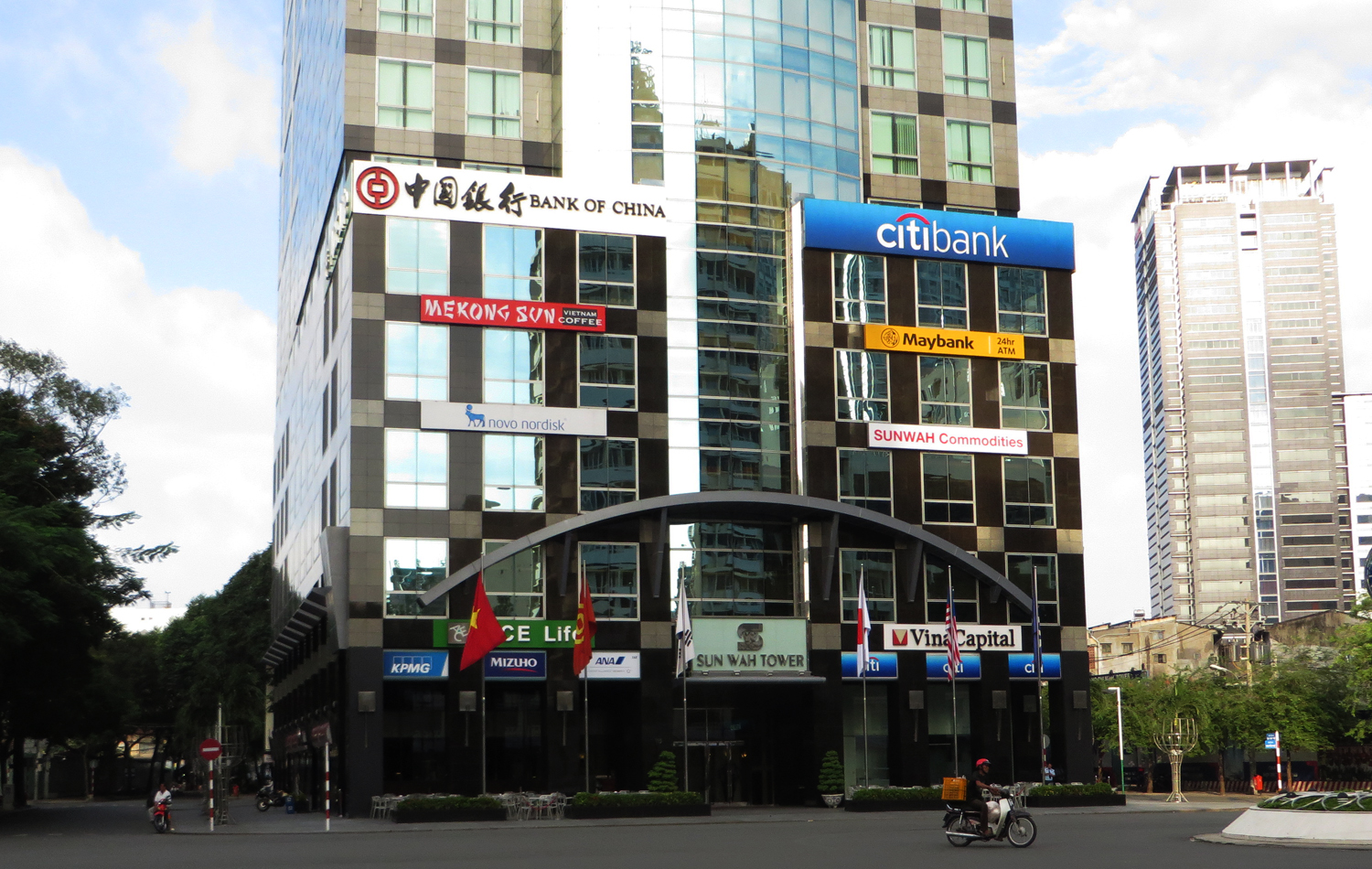
Today the Sun Wah Tower stands on the site of the Église Sainte-Marie-Immaculée, Saigon’s first cathedral
Tim Doling is the author of the guidebook Exploring Saigon-Chợ Lớn – Vanishing heritage of Hồ Chí Minh City (Nhà Xuất Bản Thế Giới, Hà Nội, 2019)
A full index of all Tim’s blog articles since November 2013 is now available here.
Join the Facebook group pages Saigon-Chợ Lớn Then & Now to see historic photographs juxtaposed with new ones taken in the same locations, and Đài Quan sát Di sản Sài Gòn – Saigon Heritage Observatory for up-to-date information on conservation issues in Saigon and Chợ Lớn.

